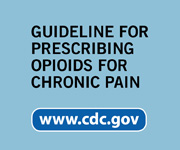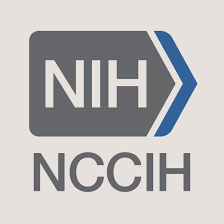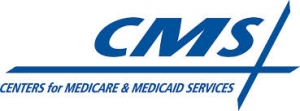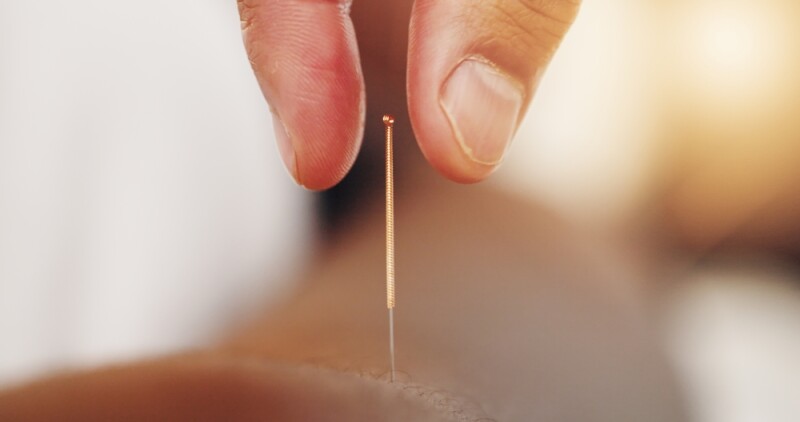Academic group leads change for hospitals in integrative pain treatment priorities
February 28, 2017
 by John Weeks, Publisher/Editor of The Integrator Blog News and Reports If strategic change in the flourishing of integrative medical models is pictured as a series of dominoes that fall one-by-one, the optimal therapeutic order for most conditions will likely follow success in changing pain treatment. Pain is the front-line of integration and has been for 40 years. While the ultimate domino in the process for optimal pain treatment will be vastly expanded coverage of non-pharmacologic and integrative therapies and practitioners, the proximal may be an accreditation requirement that hospitals and major delivery organizations be “scored” on their implementation of non-pharma options. To its great credit, pushing with both hands on that domino is the Academic Consortium for Integrative Medicine and Health (ACIMH).
by John Weeks, Publisher/Editor of The Integrator Blog News and Reports If strategic change in the flourishing of integrative medical models is pictured as a series of dominoes that fall one-by-one, the optimal therapeutic order for most conditions will likely follow success in changing pain treatment. Pain is the front-line of integration and has been for 40 years. While the ultimate domino in the process for optimal pain treatment will be vastly expanded coverage of non-pharmacologic and integrative therapies and practitioners, the proximal may be an accreditation requirement that hospitals and major delivery organizations be “scored” on their implementation of non-pharma options. To its great credit, pushing with both hands on that domino is the Academic Consortium for Integrative Medicine and Health (ACIMH).  In November of 2014, the accreditor, the Joint Commission, took the first step. They passed the Clarification of the Pain Management Standard. That document elevated the importance of non-pharmacologic approaches. Acupuncture therapy, massage therapy, chiropractic therapy, cognitive behavioral therapy, and osteopathy were among the methods explicitly called out. ACIMH, led then by Arya Nielsen, PhD, LAc, and Ben Kligler, MD, MPH, pushed the Joint Commission in this direction with a letter signed by 25 of the consortium’s members two years earlier requesting a new look at emerging evidence on acupuncture and other approaches. It mattered that the 25 signatures were all from organizations accredited through the Joint Commission. Nielsen was the spark plug, with Kligler, the then ACIMH chair, bringing the organizational clout. ACIMH submitted accompanying white papers to support their request. The 2014 victory was major, yet symbolic. The new standard had no “scoring” attached. While hospitals are presently urged to consider non-pharmacologic approaches, they needn’t be concerned that their accreditation grades would be marred if they did nothing but continue to dispense opioids and other pharmaceuticals. There were no teeth in the new clarification, no police power.
In November of 2014, the accreditor, the Joint Commission, took the first step. They passed the Clarification of the Pain Management Standard. That document elevated the importance of non-pharmacologic approaches. Acupuncture therapy, massage therapy, chiropractic therapy, cognitive behavioral therapy, and osteopathy were among the methods explicitly called out. ACIMH, led then by Arya Nielsen, PhD, LAc, and Ben Kligler, MD, MPH, pushed the Joint Commission in this direction with a letter signed by 25 of the consortium’s members two years earlier requesting a new look at emerging evidence on acupuncture and other approaches. It mattered that the 25 signatures were all from organizations accredited through the Joint Commission. Nielsen was the spark plug, with Kligler, the then ACIMH chair, bringing the organizational clout. ACIMH submitted accompanying white papers to support their request. The 2014 victory was major, yet symbolic. The new standard had no “scoring” attached. While hospitals are presently urged to consider non-pharmacologic approaches, they needn’t be concerned that their accreditation grades would be marred if they did nothing but continue to dispense opioids and other pharmaceuticals. There were no teeth in the new clarification, no police power.  All that may change with a new Joint Commission review currently underway broadcast via a mid-February 2017 ACIMH e-message to its members. They urged responses to the Joint Commission’s Proposed Standards Revisions Related to Pain Assessment and Management to a comment period that ended on February 20. The notice, signed by current ACMIH chair Rob Saper, MD, MPH, Nielsen, and the organization’s Policy Working Group chair Leslie Mendoza-Temple, MD (pictured, respectively) was then broadcast to others through the Integrator Blog News and Reports and the Integrative Health Policy Consortium. Some of the key language reads, "the hospital promotes access to non-pharmacologic pain treatment (this may include alternative modalities, such as chiropractic, relaxation therapy, music therapy)." Reference is made later in the document to using "non-pharmacologic and multi-modal approaches.” The ACIMH letter specifically urged recipients to promote “the inclusion and naming of evidence-informed non-pharmacologic therapies for pain as an Element of Performance for Provision of Care as referenced in the 2015 Joint Commission clarification.” They quoted the revision, first published in November 2014, in suggesting that letter writers name “non-pharmacologic strategies: physical modalities (for example, acupuncture therapy, chiropractic therapy, osteopathic manipulative treatment, massage therapy, and physical therapy), relaxation therapy, and cognitive behavioral therapy and music therapy.” The ACIMH letter then urges that “hospitals provide and promote access rather than only promote access (line 35) to nonpharmacologic pain treatment.” Then they go a step further. “The Joint Commission should stipulate that referral options must be accessible onsite for inpatients to be able to access care and reduce need for opioids” and that “the hospital either treats the patient's pain or refers the patient for treatment." Finally, the letter “recommend(s) these nonpharmacologic pain therapies be considered as part of an initial treatment plan for pain, sometimes alone and often in conjunction with standard pharmacological approaches.” The date for the publications of the Joint Commission’s final statement on the proposed revision was not noted.
All that may change with a new Joint Commission review currently underway broadcast via a mid-February 2017 ACIMH e-message to its members. They urged responses to the Joint Commission’s Proposed Standards Revisions Related to Pain Assessment and Management to a comment period that ended on February 20. The notice, signed by current ACMIH chair Rob Saper, MD, MPH, Nielsen, and the organization’s Policy Working Group chair Leslie Mendoza-Temple, MD (pictured, respectively) was then broadcast to others through the Integrator Blog News and Reports and the Integrative Health Policy Consortium. Some of the key language reads, "the hospital promotes access to non-pharmacologic pain treatment (this may include alternative modalities, such as chiropractic, relaxation therapy, music therapy)." Reference is made later in the document to using "non-pharmacologic and multi-modal approaches.” The ACIMH letter specifically urged recipients to promote “the inclusion and naming of evidence-informed non-pharmacologic therapies for pain as an Element of Performance for Provision of Care as referenced in the 2015 Joint Commission clarification.” They quoted the revision, first published in November 2014, in suggesting that letter writers name “non-pharmacologic strategies: physical modalities (for example, acupuncture therapy, chiropractic therapy, osteopathic manipulative treatment, massage therapy, and physical therapy), relaxation therapy, and cognitive behavioral therapy and music therapy.” The ACIMH letter then urges that “hospitals provide and promote access rather than only promote access (line 35) to nonpharmacologic pain treatment.” Then they go a step further. “The Joint Commission should stipulate that referral options must be accessible onsite for inpatients to be able to access care and reduce need for opioids” and that “the hospital either treats the patient's pain or refers the patient for treatment." Finally, the letter “recommend(s) these nonpharmacologic pain therapies be considered as part of an initial treatment plan for pain, sometimes alone and often in conjunction with standard pharmacological approaches.” The date for the publications of the Joint Commission’s final statement on the proposed revision was not noted.  Comment: The politics of pain care in the United States is, like the politics of integrative care in general, kindly put, an uneven process. These “integrative” natural health care approaches are a subset of “non-pharmacologic” options. But one never knows what modalities or, by extension, related practitioner types, will be explicitly referenced. The relatively new options for conventional delivery organizations such as chiropractic and acupuncture and yoga therapy can be as mishandled or denied as undocumented immigrants in the Trump era. A case in point is with the draft 2016 CDC Guideline on Opioid Prescribing. The Guideline includes this wonderfully transformative language: “Non-pharmacologic therapy and nonopioid pharmacologic therapy are preferred for chronic pain.” The use of the work “preference” suggests prioritization. This alone suggests a radical transformation from current practice.
Comment: The politics of pain care in the United States is, like the politics of integrative care in general, kindly put, an uneven process. These “integrative” natural health care approaches are a subset of “non-pharmacologic” options. But one never knows what modalities or, by extension, related practitioner types, will be explicitly referenced. The relatively new options for conventional delivery organizations such as chiropractic and acupuncture and yoga therapy can be as mishandled or denied as undocumented immigrants in the Trump era. A case in point is with the draft 2016 CDC Guideline on Opioid Prescribing. The Guideline includes this wonderfully transformative language: “Non-pharmacologic therapy and nonopioid pharmacologic therapy are preferred for chronic pain.” The use of the work “preference” suggests prioritization. This alone suggests a radical transformation from current practice.  But what are the non-pharmacological options specifically mentioned? The draft CDC guideline explicitly included as non-pharmacologic approaches “… complementary and alternative therapies (e.g., manipulation, massage, and acupuncture).” Yet, when the final was published three months later, some of these options were excised from the portrait. The only non-pharmacologic options were “exercise, aquatic, aerobic, psychological, cognitive behavioral therapy, and bio-psycho-social interventions.” Only the rare chief medical officer is likely to take this to mean acupuncture, chiropractic, and massage. For these reasons, this Joint Commission draft is thus somewhat disconcerting. The explicit list of therapies in the draft statement is more limited than the present guidance. Neither acupuncture nor massage, for instance, are specifically called out.
But what are the non-pharmacological options specifically mentioned? The draft CDC guideline explicitly included as non-pharmacologic approaches “… complementary and alternative therapies (e.g., manipulation, massage, and acupuncture).” Yet, when the final was published three months later, some of these options were excised from the portrait. The only non-pharmacologic options were “exercise, aquatic, aerobic, psychological, cognitive behavioral therapy, and bio-psycho-social interventions.” Only the rare chief medical officer is likely to take this to mean acupuncture, chiropractic, and massage. For these reasons, this Joint Commission draft is thus somewhat disconcerting. The explicit list of therapies in the draft statement is more limited than the present guidance. Neither acupuncture nor massage, for instance, are specifically called out.  I am choosing to go Pollyanna on this, hoping that the Joint Commission will know that explicitly urging its accredited hospitals to consider a wider range of evidence-based non-pharmacologic approaches is in the interest of the public health. After all, the NIH National Center for Integrative Medicine and Health published a much broader list of valuable approaches. Oddly, the NCCIH didn’t include chiropractic, but did include acupuncture and massage. More recently, the American College of Physicians also explicitly named a broader list of integrative therapies in a guideline for back pain.
I am choosing to go Pollyanna on this, hoping that the Joint Commission will know that explicitly urging its accredited hospitals to consider a wider range of evidence-based non-pharmacologic approaches is in the interest of the public health. After all, the NIH National Center for Integrative Medicine and Health published a much broader list of valuable approaches. Oddly, the NCCIH didn’t include chiropractic, but did include acupuncture and massage. More recently, the American College of Physicians also explicitly named a broader list of integrative therapies in a guideline for back pain.  Back to the dominoes. Major medical organizations, such as the American Medical Association, are on record urging broader coverage for non-pharmacologic approaches, recognizing that payment is a major barrier to utilizing the CDC’s “preferred” option. If the Joint Commission scoring goes through, mightn’t members of the American Hospital Association—virtually all of whom are Joint Commission accredited—soon be knocking on the door of Congress? Wouldn’t it be critically important to get the Centers for Medicare and Medicaid Services (CMS) to expand coverage options? When CMS changes coverage, private insurers typically follow suit. And then, the next domino. The idea of non-pharmacologic approaches for pain coming a becomes habit of mind. These organizational leaders begin to have “Aha!” moments: non-pharma might be useful as first-line treatment in non-pain areas like cardiovascular disease, diabetes, arthritis, and more. That domino of consciousness falls and we begin to see the change in the therapeutic order of the nation toward an actual health care system. I did warn you that I was going all "Pollyanna" here. Click here to read John’s latest articles.
Back to the dominoes. Major medical organizations, such as the American Medical Association, are on record urging broader coverage for non-pharmacologic approaches, recognizing that payment is a major barrier to utilizing the CDC’s “preferred” option. If the Joint Commission scoring goes through, mightn’t members of the American Hospital Association—virtually all of whom are Joint Commission accredited—soon be knocking on the door of Congress? Wouldn’t it be critically important to get the Centers for Medicare and Medicaid Services (CMS) to expand coverage options? When CMS changes coverage, private insurers typically follow suit. And then, the next domino. The idea of non-pharmacologic approaches for pain coming a becomes habit of mind. These organizational leaders begin to have “Aha!” moments: non-pharma might be useful as first-line treatment in non-pain areas like cardiovascular disease, diabetes, arthritis, and more. That domino of consciousness falls and we begin to see the change in the therapeutic order of the nation toward an actual health care system. I did warn you that I was going all "Pollyanna" here. Click here to read John’s latest articles. 



















SHARE